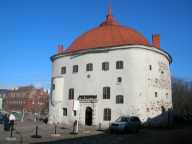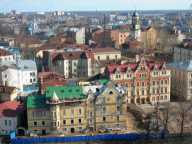
Home


Hungary


Cardinal József Mindszenty


1956 Hungarian Revolution (My Story)
(My Eyewitness story of our Freedomfight
and Resistance against the Soviet Invasion)


50th Anniversary of our Freedomfight


My Travel Pages

Africa

America

Asia

Europe

Hungary

Oceania
My Russia pages

Russia
Russia History & Facts in brief
Moscow

Moscow

Catholic Cathedral

Christ the Saviour Cathedral

Kazan Cathedral

Kremlin

Kremlin Cathedrals

Moscow Airport

Moscow Buses

Moscow Metros

Novodevichy Convent

Red Square

Virgin on the Moat Cathedral
- - -
- -
Saint Petersburg

Saint Petersburg

Artillery Museum

Hermitage

Kronstadt

Peterhof

Oranienbaum

Peter and Paul Fortress

Saint Petersburg Airport

Saint Petersburg Buses

Saint Petersburg Metros

Saint Petersburg Trams

Vyborg
- - -
- -
Vladivostok

Vladivostok

Vladivostok Buses

Vladivostok Trains

Vladivostok Trams
- - -
- -
Volgograd

Volgograd

Tractor Factory - Museum

Volgograd Airport

Volgograd Buses

Volgograd Trams

Volgograd Trolleybuses
|

Russia facts & history in brief
 My Russia pages directory
My Russia pages directory
Map of Russia
Vyborg
Excerpted from Wikipedia, the free encyclopedia
Vyborg (Russian: Vyborg; Finnish: Viipuri; Swedish:
Viborg; German: Wiburg) is a town in Leningrad Oblast,
Russia, situated on the Karelian Isthmus near the head
of the Bay of Vyborg, 130 km to the northwest of St.
Petersburg, 38 km south from Russia's border with Finland,
where the Saimaa Canal enters the Gulf of Finland.
Population: 79,224 (2002 Census); 80,924 (1989 Census).
History
The area where Vyborg is located used to be a trading center
on the River Vuoksi's western branch, which has dried up.
The area was inhabited by the Karelians, a Finnic tribe
which gradually came under the
domination of Novgorod and Sweden.
The first castle of Vyborg was founded during the so-called
"Third Swedish Crusade" in 1293 by marshal Torkel Knutsson.
The castle was fought over for decades between Sweden
and the Republic of Novgorod.
By the Treaty of Nöteborg in 1323, Viborg was finally
recognized as a part of Sweden.
It withstood a prolonged siege by Daniil Shchenya during
the Russo-Swedish War of 1496-1499.
The town's trade privileges were chartered by King
Eric of Pomerania in 1403.
Viborg remained in Swedish hands until its capture by Peter
the Great in the Great Northern War (1710).
The Treaty of Nystad (1721), which concluded the war,
assigned the town and a part of Old Finland to Russia.
One of the largest naval battles in history was fought
off shore in the Viipuri Bay on July 4, 1790.
After the rest of Finland was ceded to Russia in 1809,
Alexander I of Russia incorporated the town and its province
into the newly-created Grand Duchy of Finland in 1812.
In the course of the 19th century, the town
developed as the center of administration and
trade for the eastern part of Finland.
The inauguration of the Saimaa Canal in 1856 benefited
the local economy as it opened the vast waterways
of Eastern Finland to the sea.
Viipuri was never a major industrial center, and
lacked large production facilities, but due to
its location it served as a focal point of transports
of all industries on the Karelian Isthmus,
Ladoga Karelia and South-Eastern Finland.
Following the Russian Revolution of 1917 and the
fall of the Russian Empire, Finland
declared itself independent.
During the Finnish Civil War Viipuri was in the hands
of the Reds until it was captured
by the Whites on 29 April 1918.
In the mid-war decades, the town, then officially
known as Viipuri, was the second biggest city
in Finland and center of Viipuri province.
In 1939 Viipuri had some 80,000 inhabitants, including
sizable minorities of Russians, Germans, Jews and Swedes.
During this time, Alvar Aalto built a masterpiece
of modernist architecture - the Viipuri Library.
During the Winter War more than 70,000 people were evacuated
from Viipuri to western Finland.
The Winter War was concluded by the Peace of Moscow,
which stipulated the transfer of Viipuri and the whole
Karelian Isthmus - emptied of their residents - to
Soviet sovereignty, where it was incorporated in to
the Karelo Finnish SSR, March 31, 1940.
As the town was still held by the Finns, the remaining
Finnish population, some 10,000 people, had to be
evacuated in haste before the handover.
Thus, practically the whole population of Finnish Viipuri
was resettled in the remaining Finland.
The evacuees from Finnish Karelia came to be a vociferous
political force, and their wish to return to their homes
was an important motive when Finland sought support from
Germany against the Soviet threat; a support that resulted
in Finland and Germany fighting on
the same side in World War II.
On August 29, 1941, Viipuri was recaptured by Finnish troops
and, soon after, the Government of Finland formally annexed
it along with the other areas lost in the Moscow Peace Treaty.
At first the Finnish Army did not allow civilians into the town.
Of the 6,287 buildings, 3,807 had been destroyed.
The first civilians started to arrive at the end of September and
by the end of the year Viipuri had a population of about 9,700.
By 1942 it has risen to 16,000.
About 70% of the evacuees from Finnish Karelia returned after the
re-conquest to rebuild their looted homes, but were again evacuated
after the Red Army's Fourth strategic offensive,
timed with the Battle of Normandy.
By the time of the Soviet offensive, the town had a
population of nearly 28,000.
The town was evacuated by June 19 and the defence of Viipuri
was entrusted to the 20th Brigade.
The town fell to the Red Army on 20 June 1944, but the Finns
managed to halt the Soviet offensive at the Battle of Tali-Ihantala,
the largest battle fought by any of the Nordic countries, in Viipuri
rural municipality which surrounded the city.
In the following Moscow Armistice September 19, 1944, Finland returned
to the borders set by the Moscow Peace treaty, and in the Paris
Peace treaties (1947) Finland relinquished all claims to Viipuri.
After the Winter War, Leningrad had wanted to incorporate the area of
Viipuri, but it took until September 1944 for it to be finally
transferred from the Karelo-Finnish SSR to Leningrad Oblast, and
the name of the town was changed to Vyborg.
During the Soviet era, the town was settled by people
from all over the Soviet Union.
The naval air bases of Pribilovo and
Veshchevo were built nearby.
Economics
Vyborg continues to be an important
industrial producer of paper.
Tourism is increasingly important, and the Russian film
festival Window to Europe takes place in the town each year.
An HVDC back-to-back facility for the exchange of electricity between
the Russian and Finnish power grid was completed near Vyborg in 1982.
It consists of three bipolar HVDC back-to-back schemes with an operating
voltage of 85 kV and a maximum transmission rate of 355 megawatts,
so that the entire maximum transmission rate amounts to 1065 megawatts.
Sights
Vyborg's most prominent landmark is the Swedish built castle, started in
the 13th century and extensively reconstructed in 1891-1894.
The Round Tower and the Rathaus Tower date from the mid-16th century.
The Viipuri Library by Finnish architect Alvar Aalto is a reference
point in the history of modern architecture.
There are also Russian fortifications, completed by 1740,
as well as the monuments to Peter I (1910) and Torkel Knutsson.
Tourists are shown the "Lenin house", where the Russian revolutionary
prepared the Bolshevik revolution during his stay
in Viipuri in September-October 1917.
Sprawling along the heights adjacent to the Gulf of Finland is Mon Repos,
one of the most spacious English parks in Eastern Europe.
The park was laid out on behest of its owner, Baron Ludwig Heinrich von
Nikolay, at the turn of the 19th centuries.
Most of the garden structures were designed by the
architect Giuseppe Antonio Martinelli.
Previously, the estate belonged to the future king Frederick
I of Württemberg (Maria Fyodorovna's brother), who called it
Charlottendahl in honor of his second wife.

A copper engraving of Viipuri in 1709.

Vyborg Castle.

Rathaus Tower in Vyborg (ca. 1500).

Round Tower in Vyborg (ca. 1550).

View from Olaf's tower.

View to Vyborg from St. Olaf tower.

Many Finnish era buildings remain in Vyborg.

For a more information about
Vyborg see Wikipedia, the free encyclopedia

This page was retrieved and condensed from
(http://en.wikipedia.org/wiki/Vyborg)
see Wikipedia, the free encyclopedia, January 2008.
All text is available under the terms of the
GNU Free Documentation License
(see
Copyrights for details).
About Wikipedia
Disclaimers

This information was correct in January 2008. E. & O.E.
|